Hand Safety First
HSF LoadGrab Rigger TagLine
HSF LoadGrab Rigger TagLine
Share
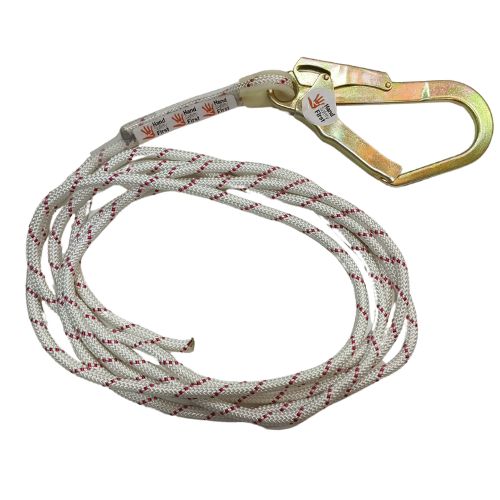

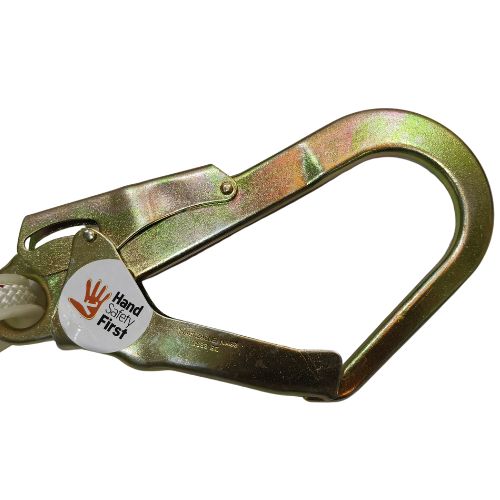
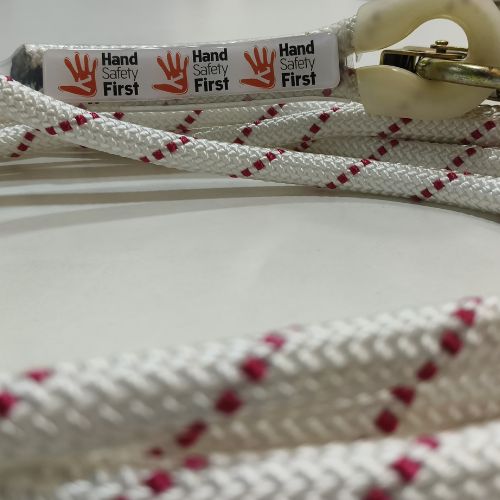
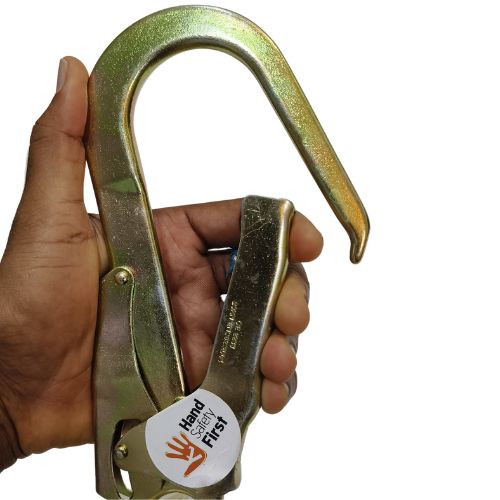

Description
The HSF LoadGrab Rigger TagLine is a crucial tool used in lifting and rigging operations, designed to provide control, stability, and safety when handling loads. Below are the main reasons for its use:
Prevents Uncontrolled Movement
Stops loads from spinning, swinging, or rotating due to crane or wind movement.
Reduces the risk of collision with nearby structures or workers by keeping the load stable.
Enhances Safety
Allows riggers to control the load from a safe distance, staying out of the fall zone.
Minimizes the risk of injury from sudden load shifts.
Improves Precision
Helps position loads accurately, especially in confined spaces or when aligning with other structures.
Ideal for high-precision installations.
Assists in Windy Conditions
Prevents the load from swinging uncontrollably in windy weather.
Increases Operational Efficiency
Improves coordination between crane operators and ground workers.
Reduces delays caused by repositioning or adjusting loads.
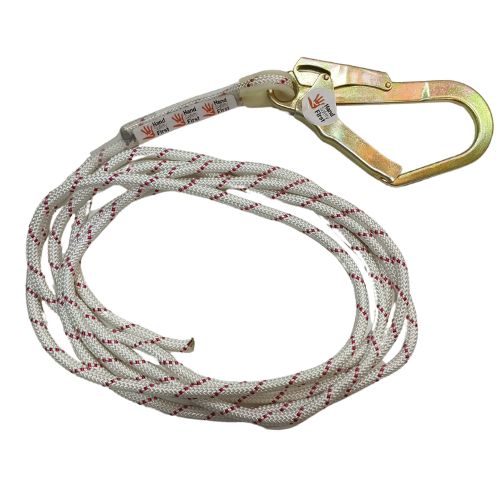
Best Practices for Using the HSF LoadGrab Rigger TagLine:
Properly Secure the TagLine
Attach the tagline securely to the load, ensuring easy manipulation without hindering its movement.
Ensure the rope is strong enough to bear the load’s weight and stress.
Position the TagLine
The operator handling the tagline should have full visibility of the load.
Stay in a safe area, away from potential hazards, and consider using multiple riggers for stabilization.
Handling the TagLine
Maintain tension on the rope to prevent the load from shifting. Avoid slack.
Keep the tagline coiled or neatly stored to prevent tangling when not in use.
Communication
Ensure clear communication between the tagline operator and crane operator, especially in noisy environments.
Use hand signals or radios for effective coordination.
Monitoring the Load
Regularly check the load’s balance. If it's unbalanced, consider using additional tagline.
Be alert to potential hazards such as overhead power lines, workers, or equipment.
Environmental Conditions
Adjust the use of tagline based on wind and weather. They're especially important in windy conditions.
Avoid using damaged or frayed tagline.
Load Placement
The tagline helps guide loads into precise locations, ensuring correct alignment during placement.
Personnel Safety
Ensure workers remain at a safe distance and avoid direct contact with the load whenever possible.
Training and Experience
Proper training is essential to effectively manage the tagline and adjust as needed during the lift.
Regular Inspection
Regularly inspect tagline for wear and tear to ensure they are in safe working condition. Replace any damaged ones.
Using the Right Length
The tagline should be long enough for control but not so long that it poses a tripping hazard or becomes tangled.
TagLine Storage
Store tagline properly after use to avoid damage or knotting, which could compromise their effectiveness.

Using Multiple TagLine
Stabilization
Large or heavy loads often require multiple tagline to stabilize them.
Attach tagline at separate strategic points to control movement from different angles. For example, when lifting large steel columns into a high-rise building, tagline stabilize the load at various points to prevent it from spinning.
Crossing TagLine
Avoid crossing tagline in ways that might cause friction or reduce stability.
Team Coordination
Ensure all personnel handling tagline communicate effectively with each other and the crane operator to prevent conflicting movements.
Example Scenarios for Multiple TagLine:
Wind Turbine Blade Lift: Using three tagline attached to different points on the blade allows coordinated control to prevent it from spinning in the wind.
Precision Lifts in Power Plants: Multiple tagline ensure alignment of large turbine components during installation.
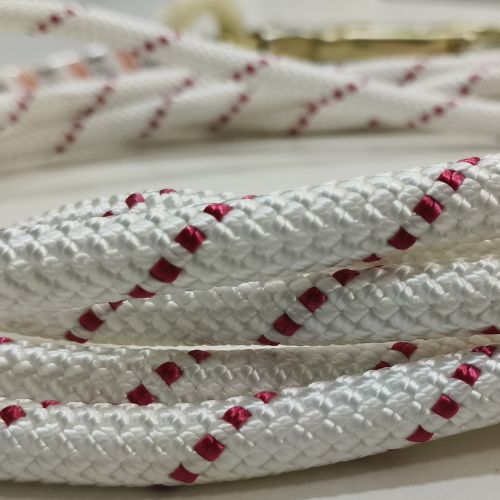
Handling During Adverse Conditions
Wind
Tagline are essential in windy conditions to stabilize the load and counteract wind forces. Use extra riggers if needed to maintain control.
Rain or Wet Conditions
Wet ropes may become slippery, so ensure riggers wear gloves to maintain a secure grip. Synthetic ropes work well in wet conditions.
Communication Between TagLine and Crane Operators
Use a set of hand signals for clear communication, especially in noisy environments. A pre-lift briefing ensures everyone is aware of their responsibilities.
Avoiding Worker Exposure to Hazardous Areas
Always establish a safety zone around the lifting area. Keep personnel out of the fall zone, and position tagline operators at a safe distance.

TagLine Use in Different Lifting Scenarios
Precision Lifting
For precise placement in tight spaces, tagline provide fine-tuned adjustments, ensuring accurate positioning of loads.
Example Applications of HSF LoadGrab Tagline
Example 1: Lifting a Single Steel Pipe
A 20-foot steel pipe weighing 5 tons is lifted with the tagline helping to prevent spinning. The crane operator lifts the pipe steadily while the tagline operator adjusts the rope to keep it stable.
Example 2: Lifting Multiple Steel Pipes
Tagline are used on a bundle of steel pipes to prevent shifting. Operators work together to adjust the ropes as the crane lifts the bundle.
Example 3: Lifting Steel Pipe in Windy Conditions
In windy weather, four tagline are used on a steel pipe to prevent it from swaying. Operators adjust the ropes to maintain control.

Post-Lift Procedures
Removing the TagLine
After the load is placed, the tagline operator releases the rope carefully, ensuring there is no tension before detaching it from the load.
Inspecting Equipment
After use, inspect the tagline for damage and properly store them to keep them in good condition for future use.
Lifting Steel Plates with TagLine
Steel plates are prone to swinging during lifts, so tagline are crucial for stability and precision.
Preparing Steel Plates for Lifting
Inspect the plates for damage and ensure rigging points are intact.
For multiple plates, stack them with separation to avoid friction and shifting during the lift.
Selecting the Right TagLine
HSF LoadGrab Rigger TagLine are strong and abrasion-resistant, ideal for handling steel plates. The length should be 1.5 to 2 times the length of the plate for optimal control.
Attaching the TagLine
Attach tagline securely to the edges of the plate, ensuring no tangling or fraying.
Lifting the Steel Plate
Control the load as the crane lifts the plate, using tagline to prevent tilting or swinging.
In windy conditions, extra tagline may be needed for stability.
Using TagLine for Stability
Apply tension to prevent swinging or rotation of the steel plate, keeping it level.
Moving the Steel Plate
As the plate moves through the air, continue guiding it to avoid obstacles, ensuring a safe distance from the load.
Lowering the Steel Plate
Guide the plate during descent to prevent swinging. Adjust the tagline for a controlled, precise placement.

Key Tips for Lifting Steel Plates with TagLine
Use multiple tagline for larger or heavier plates for better stability.
Ensure tagline are properly secured before lifting.
Consider environmental factors like wind and weather that could affect stability.
Maintain clear communication between crane operators and tagline handlers.
Example Scenarios for Lifting Steel Plates
Single Steel Plate Lift: A 10x5 ft steel plate weighing 2 tons is lifted. The tagline help prevent tilting and swinging as the plate is moved into position.
Multiple Steel Plates Lift: Tagline are used on stacked plates to prevent tipping. Operators work together to maintain stability.
Lifting in Windy Conditions: Tagline are essential for controlling the plate’s movement in windy weather, preventing it from flipping.
This process ensures safe, efficient, and precise lifting and rigging when using the HSF LoadGrab Rigger TagLine.







